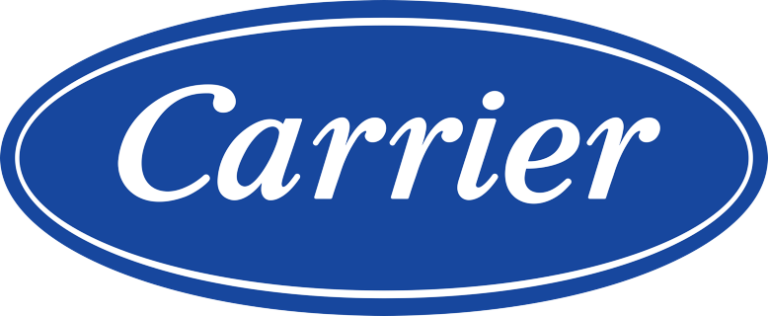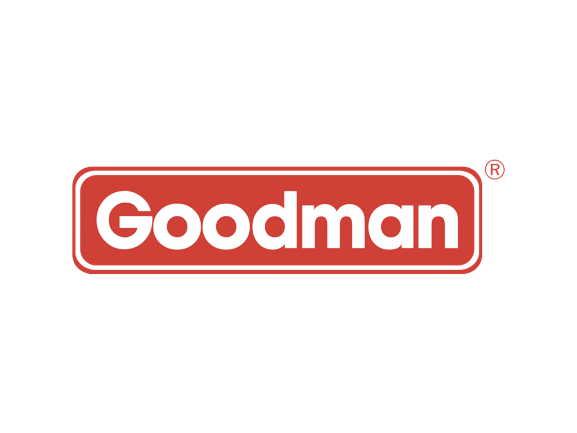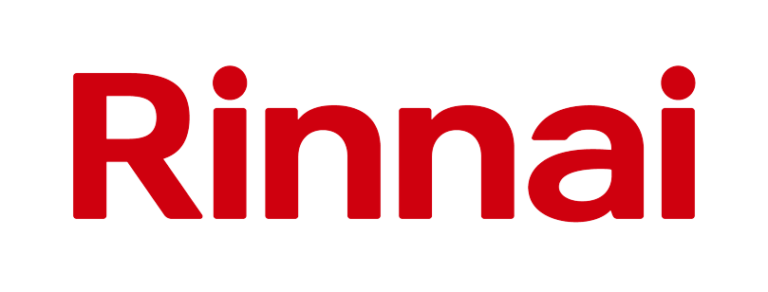Furnace installation
Furnace Installation, Maintenance, Repair & Services
Whether you’re seeking a new furnace installation or require comprehensive maintenance and repair services, BCRC is your trusted partner in delivering tailored solutions that align with your unique heating needs. With years of experience serving Vancouver and beyond, we bring an unwavering commitment to excellence and a passion for enhancing indoor comfort. We not only install furnaces – we build relationships based on trust and reliability.
Customer-Centric Approach
Your comfort is our priority. Our friendly team listens to your needs, offers expert advice, and delivers solutions that exceed your expectations.
Cutting-Edge Solutions
Stay ahead of the curve with our innovative Furnace Installation solutions. BCRC stays updated on the latest HVAC advancements, ensuring you benefit from the best in the industry.
Unmatched Versatility
Whether it's residential or commercial, we handle it all. Our experts specialize in various furnace services, making us your one-stop HVAC destination.
Comprehensive Services
From routine maintenance to complex repairs, BCRC covers all aspects of Furnace Installation care. Our comprehensive suite of services keeps your system operating at its best.
Swift Repairs, Anytime
Don't let a broken furnace disrupt your comfort. Our 24/7 availability means you can count on our experts to swiftly diagnose and repair issues whenever they arise.
Seamless Installations
Elevate your space with our flawless furnace installations. Our skilled technicians ensure your new system integrates seamlessly, keeping you warm and cozy.
Tailored Solutions
We understand that every home is unique. Our experts craft custom solutions to match your heating needs perfectly, ensuring maximum efficiency and comfort.
Expertise You Can Trust
At BCRC HVAC in Vancouver, our seasoned experts bring years of industry experience to every furnace installation, repair, and service we provide.

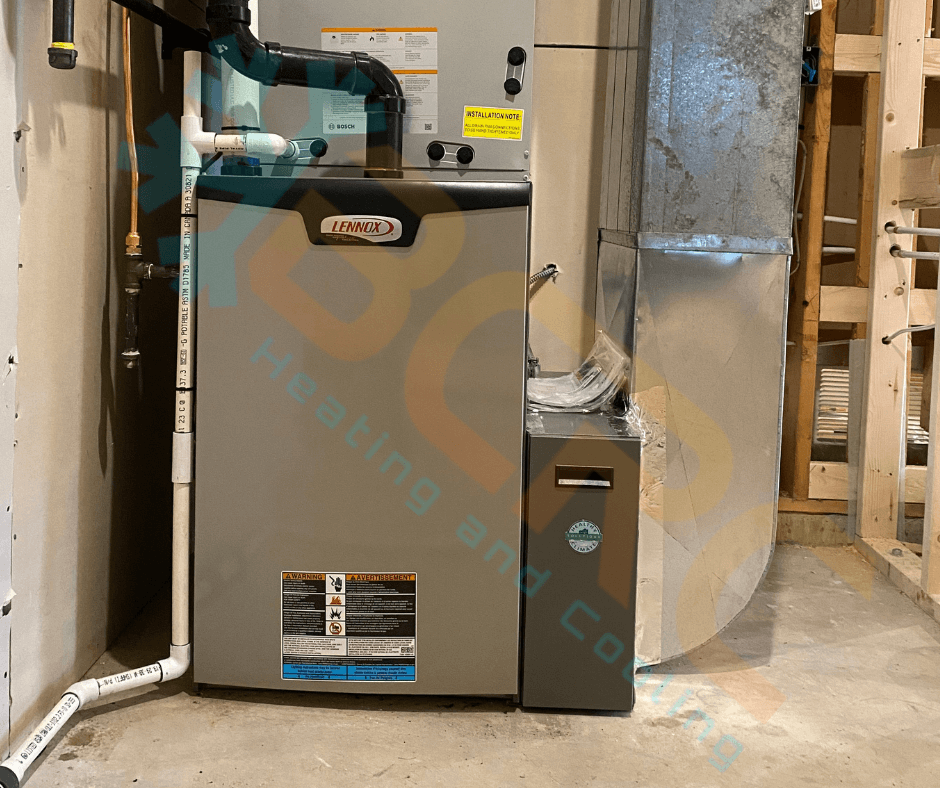
Welcome to BCRC, your premier HVAC partner in Vancouver! When it comes to top-notch Furnace Installation services and installation, look no further. Our experienced team is dedicated to ensuring your home’s comfort all year round. Whether you need a brand-new furnace installation or a reliable repair for your existing system, BCRC has you covered. Our skilled technicians combine industry expertise with a customer-first approach, ensuring efficient installations and meticulous service that exceeds your expectations. Trust BCRC for unparalleled Furnace Installation solutions that bring warmth and peace of mind to your home.
Elevate your home’s heating game with BCRC, Vancouver’s trusted name in Furnace Installation services and installation. With our deep-rooted commitment to excellence, we specialize in delivering tailored HVAC solutions that perfectly match your needs. Our comprehensive range of services includes cutting-edge furnace installations that not only optimize energy efficiency but also provide consistent warmth during chilly seasons. At BCRC, we don’t just sell Furnace Installation; we provide end-to-end solutions that begin with thorough assessments, extend to flawless installations, and continue with prompt maintenance and repairs. Experience the difference of working with BCRC, where your comfort is our priority, and your satisfaction is our reward.
BCRC's Furnace Installation Benefits
604 781 7272

Table of Contents
Furnace Installation Differences
There are several types of furnaces commonly used for heating residential and commercial spaces. Here are some of the main types:
5. Dual-Fuel Systems: These systems combine a heat pump with a gas or oil furnace. The heat pump installation is used during milder weather when heating demands are lower, and the furnace is activated during colder periods. This setup can provide energy efficiency and cost savings.
6. High-Efficiency Furnaces: High-efficiency Furnace Installation are designed to maximize energy efficiency and reduce utility bills. They often have advanced features such as variable-speed blowers, sealed combustion systems, and condensing technology that extracts more heat from combustion gases.
7. Modulating and Two-Stage Furnaces: These furnaces have multiple heat output levels. Modulating furnaces continuously adjust the heat output based on the actual heating needs, while two-stage Furnace Installation have two fixed heat output levels. These furnaces can help maintain a more consistent indoor temperature and reduce energy consumption.
8. Floor Furnaces and Wall Furnaces: These types of Furnace Installation are often used in smaller spaces or specific areas of a building. Floor furnaces are installed in the floor, usually in a central location, and distribute heat through grates. Wall furnaces are mounted on walls and provide direct heating to a specific room.
Gas Furnaces: Gas furnaces are among the most popular heating systems. They use natural gas or propane as fuel to generate heat. These furnaces are known for their efficiency and can provide consistent warmth throughout a space.
Electric Furnaces: Electric furnaces use electric heating elements to generate heat. They are often used in areas where natural gas is not available or as a secondary heating source. Electric furnaces are generally less efficient than gas Furnace Installation but can still be effective for smaller spaces.
Oil Furnaces: Oil furnaces use heating oil to produce heat. While they are less common these days due to the rise of gas and electric options, they are still used in some regions. Oil furnaces require a storage tank for the oil and are known for producing consistent and even heating.
Propane Furnaces: Propane furnaces are similar to natural gas furnaces, but they use propane gas as their fuel source. They are often used in areas where natural gas infrastructure is not available. Propane Furnace Installation are efficient and can be a good option for both residential and commercial spaces.
When choosing a Furnace Installation type, it’s important to consider factors such as fuel availability, energy efficiency, installation costs, and the specific heating needs of your space. Consulting with HVAC professionals can help you make an informed decision based on your requirements and budget.

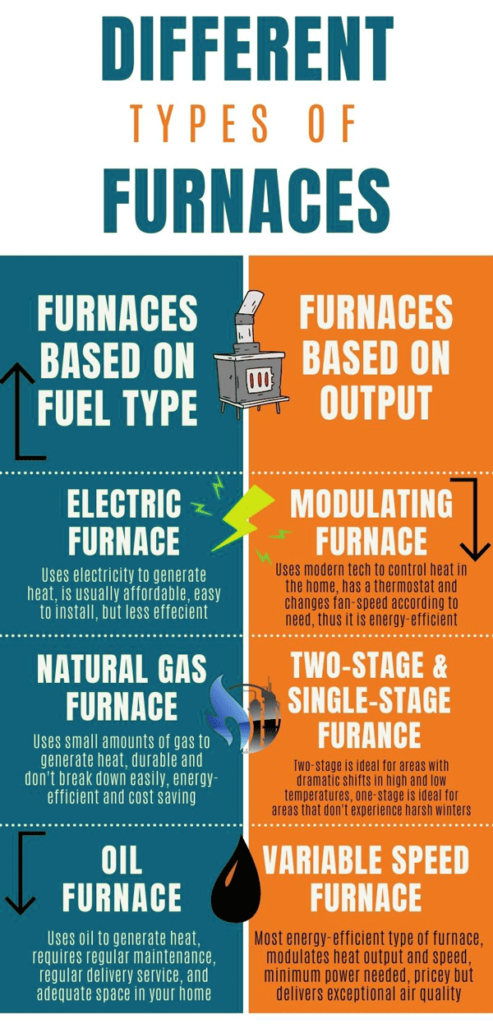
BCRC's Furnace Installation Services Areas
- Furnace Services in Vancouver
- Furnace Services in Burnaby
- Furnace Services in West Vancouver
- Furnace Services in North Vancouver
- Furnace Services in Coquitlam
- Furnace Services in Surrey
- Furnace Services in Delta
- Furnace Services in Langley
- Furnace Services in New Westminster
- Furnace Services in Port Coquitlam
Book an In-Home Appointment Get Your Free Quote | Use Your Discount
604 781 7272
How a Furnace Installation Works
A furnace is a heating system that works by generating heat and distributing it throughout a building to maintain a comfortable indoor temperature. The process involves several key components and steps:
6. Air Blower: An air blower, also known as a fan or blower motor, pushes the heated air through a duct system. The blower helps distribute the warmed air evenly throughout the building.
7. Ductwork: The heated air is carried through a network of ducts that run throughout the building. These ducts are strategically placed to ensure that warm air reaches all rooms and spaces.
8. Registers and Vents: The heated air is released into individual rooms through registers or vents. These are usually located on walls, floors, or ceilings. Registers can often be adjusted to control the amount of heated air entering a room.
9. Return Ducts: As the heated air circulates through the rooms, it gradually cools down. Return ducts, located in various areas of the building, draw the cooler air back into the Furnace Installation to be reheated.
10. Cycle Control: The furnace’s operation is controlled by a cycle. Once the indoor temperature reaches the desired level, the thermostat signals the Furnace Installation to shut off. When the temperature drops again, the cycle restarts.
- Thermostat: The process begins with the thermostat, which serves as the control center for the Furnace Installation. The thermostat detects the current indoor temperature and compares it to the desired temperature set by the user.
- Signal to Ignition System: When the indoor temperature drops below the desired level, the thermostat sends a signal to the furnace’s ignition system to start the heating process.
- Combustion: In gas and oil furnaces, the fuel (natural gas, propane, or heating oil) is mixed with air in a combustion chamber. An ignition source, such as a pilot light or an electric ignition system, ignites the fuel-air mixture, creating a controlled flame.
- Heat Exchanger: The heat generated by the flame is transferred to a heat exchanger. The heat exchanger is a metal component that separates the combustion gases from the indoor air. As the hot combustion gases pass through the heat exchanger, they heat the metal surface.
- Air Circulation: The indoor air is drawn into the furnace’s air intake and is then directed over the heated surface of the heat exchanger. As the air passes over the hot metal, it absorbs the heat from the heat exchanger.
It’s important to note that the specifics of how a Furnace Installation works can vary depending on the type of furnace (gas, electric, oil, etc.) and its design. Regular maintenance and proper installation are crucial to ensure a furnace operates efficiently, safely, and reliably. If you’re not familiar with Furnace Installation systems, it’s recommended to consult with HVAC professionals for installation, maintenance, and repairs.

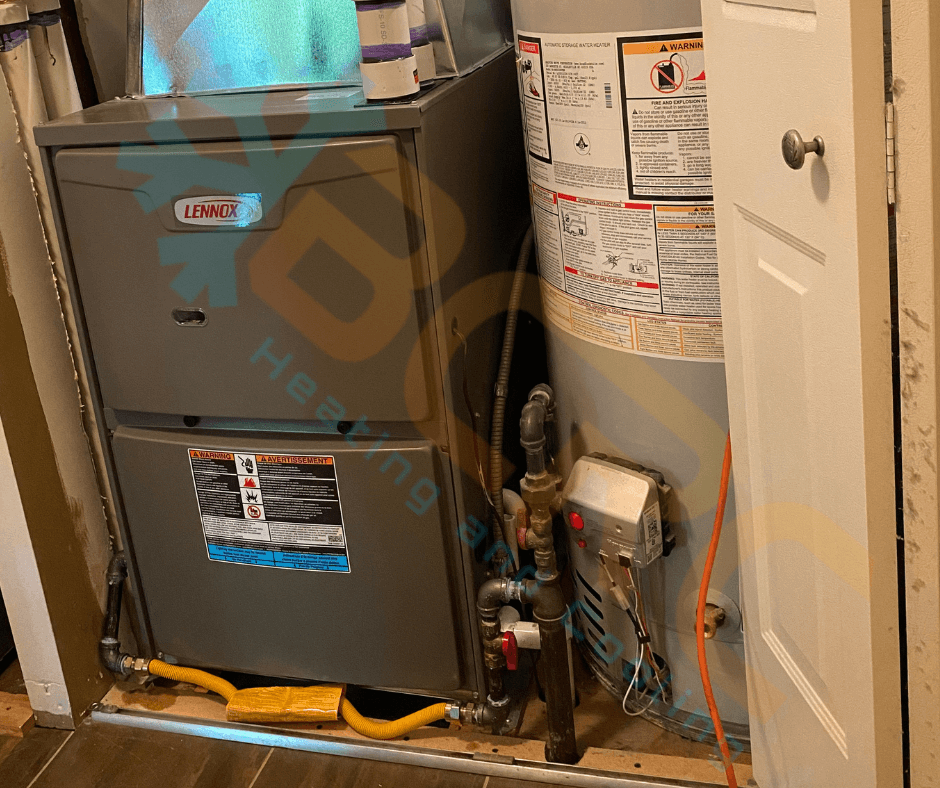
Furnace Installation User Benefits
Using a Furnace Installation for heating your home or commercial space offers several benefits, making it a popular and effective choice for maintaining comfort during colder seasons. Here are some of the key benefits of using a furnace:
Effective Heating: Furnace Installation are designed to provide efficient and consistent heating throughout your space. They can quickly raise the indoor temperature to your desired level, ensuring comfort even in the coldest weather.
Energy Efficiency: Modern furnaces come with energy-efficient features, such as high-efficiency models and variable-speed blowers. These features can help you save on energy costs by using fuel more efficiently and reducing energy waste.
Temperature Control: Furnace Installation offer precise temperature control. Thermostats allow you to set and maintain your preferred indoor temperature, ensuring a comfortable environment for your family or occupants.
Fast Heating Response: Furnaces can quickly respond to changes in temperature. When you adjust the thermostat, a Furnace Installation can start heating almost immediately, providing rapid comfort when you need it.
Even Heating Distribution: Furnace Installation work in conjunction with duct systems to evenly distribute warm air to all areas of your home or building. This eliminates cold spots and ensures consistent comfort throughout.
Versatility: Furnaces are available in various types, including gas, electric, and oil models, allowing you to choose the option that best suits your fuel availability and preferences.
Longevity: Well-maintained Furnace Installation can have a long lifespan, providing reliable heating for many years. Regular maintenance and timely repairs can extend the life of your furnace.
Improved Indoor Air Quality: Many modern Furnace Installation come equipped with air filtration systems that help remove dust, allergens, and contaminants from the air as it circulates through the system. This can contribute to better indoor air quality.
Home Value: Installing a high-quality Furnace Installation can increase the value of your property, making it an attractive feature for potential buyers or tenants.
Quiet Operation: Furnaces are designed to operate quietly, minimizing disruptions to your daily activities and providing a comfortable environment without noise disturbances.
Compatibility with Smart Technology: Many newer Furnace Installation models are compatible with smart thermostats and home automation systems. This allows you to control your heating remotely and optimize energy usage.
Reduced Environmental Impact: High-efficiency furnaces produce fewer emissions and use less fuel, which can contribute to a reduced carbon footprint and lower environmental impact.
Reliability: Furnace Installation are known for their reliability, especially when properly maintained. Regular servicing can help identify and address potential issues before they become major problems.
When choosing a Furnace Installation, it’s essential to consider factors such as fuel type, energy efficiency, size, and the specific heating needs of your space. Consulting with HVAC professionals can help you make an informed decision that aligns with your requirements and budget.
Furnace Components
A furnace is a complex system comprised of various components that work together to generate and distribute heat throughout a building. Here are the main components of a typical Furnace Installation:
Thermostat: The thermostat is the control center of the furnace. It detects the indoor temperature and signals the furnace to start or stop heating based on the set temperature.
Ignition System: This component ignites the fuel-air mixture in gas and oil Furnace Installation. It can be a pilot light, intermittent pilot, or hot surface ignition system.
Burners: Burners are responsible for mixing the fuel (natural gas, propane, or oil) with air and creating a controlled flame for combustion.
Combustion Chamber: The combustion chamber houses the burners and provides a controlled environment for the combustion process to occur.
Heat Exchanger: The heat exchanger is a critical component that transfers heat from the combustion gases to the surrounding air. It ensures that the combustion gases and indoor air remain separate.
Blower Motor: The blower motor, also known as the air handler or fan motor, circulates air through the Furnace Installation and into the duct system. It helps distribute warm air throughout the building.
Air Filter: The air filter captures dust, debris, and other particles from the incoming air before it enters the furnace. This helps maintain indoor air quality and keeps the Furnace Installation components clean.
Ductwork: Ducts are channels that carry heated air from the furnace to different rooms in the building. They also return cooler air back to the Furnace Installation for reheating.
Registers and Vents: Registers and vents are openings through which heated air is released into rooms. They can usually be adjusted to control airflow and temperature distribution.
Flue Pipe or Chimney: This component vents the combustion gases produced during the heating process safely out of the building. It’s essential for proper ventilation and safety.
Pressure Switch: The pressure switch monitors the air pressure in the combustion chamber and ensures proper airflow for combustion. If the pressure is not at the correct level, the switch can shut down the Furnace Installation to prevent unsafe conditions.
Gas Valve: In gas furnaces, the gas valve controls the flow of natural gas or propane to the burners. It opens and closes to regulate the amount of fuel being burned.
Limit Switch: The limit switch monitors the temperature inside the Furnace Installation. If the temperature becomes too high, the switch shuts off the burners to prevent overheating.
Flame Sensor: The flame sensor detects the presence of a flame. If the sensor doesn’t detect a flame when it should, it can shut down the furnace to prevent gas buildup and potential hazards.
Control Board: The control board, also known as the circuit board, manages the operation of the Furnace Installation components. It receives signals from the thermostat and other sensors to coordinate heating cycles.
Safety Features: Furnaces often include safety features such as rollout switches and pressure switches to ensure safe operation. These switches monitor conditions and shut down the Furnace Installation if there’s a risk of overheating or other safety concerns.
These components work in harmony to provide effective and efficient heating. Regular maintenance and timely repairs are crucial to ensure that all components are functioning properly and safely.
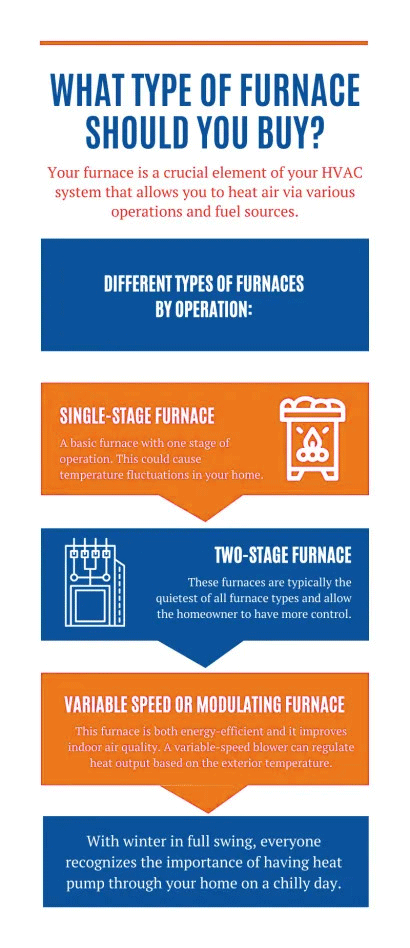
Tips How to Maintain a Furnace Installation


Proper Furnace Installation maintenance is essential for ensuring reliable and efficient heating, prolonging the lifespan of the equipment, and maintaining indoor air quality. Here are some tips to help you effectively maintain your Furnace Installation. All the following services are performed by the specialized and experienced experts of BCRC company. Please keep in mind that it is never recommended that some of the following items be done by inexperienced and technically qualified people.
Regular Inspections: Schedule annual professional inspections by a qualified HVAC technician. They can identify potential issues, clean components, and ensure your Furnace Installation is operating safely and efficiently.
Change Air Filters: Replace or clean your furnace’s air filters regularly, ideally every 1-3 months. Dirty filters can restrict airflow, reduce efficiency, and negatively impact indoor air quality.
Keep Vents Clear: Ensure that all supply and return vents are unobstructed by furniture, rugs, or other objects. Blocked vents can disrupt airflow and affect heating performance.
Monitor Thermostat Settings: Set your thermostat to the desired temperature and avoid frequent adjustments. Consistent settings help maintain efficient operation.
Check Pilot Light or Ignition: If you have a gas Furnace Installation with a pilot light, ensure it’s consistently lit. For electronic ignitions, make sure they are working properly. Contact a professional if you encounter issues.
Clean Blower Compartment: Turn off the power to the Furnace Installation and carefully remove the blower compartment cover. Use a vacuum or a soft brush to clean dust and debris from the blower assembly.
Lubricate Moving Parts: If your furnace has oil ports, apply a few drops of non-detergent motor oil to the blower motor and other moving parts that require lubrication.
Inspect Flue and Venting: Check the flue pipe, chimney, and venting system for any blockages, corrosion, or damage. Proper venting is crucial for safety and efficient operation.
Check and Tighten Electrical Connections: Turn off power to the furnace before checking electrical connections. Inspect wires and connections for signs of wear or corrosion, and tighten any loose connections.
Test Safety Controls: Test safety controls, such as the pressure switch and limit switch, to ensure they’re functioning correctly. Follow manufacturer instructions or consult a professional.
Clean and Inspect Heat Exchanger: A professional should inspect the heat exchanger for cracks or signs of damage during annual maintenance visits. A cracked heat exchanger can lead to carbon monoxide leaks.
Monitor Carbon Monoxide Detectors: Install carbon monoxide detectors near your Furnace Installation and sleeping areas. Test them regularly and replace batteries as needed.
Trim Vegetation: Ensure that outdoor vents, exhaust pipes, and intake pipes are clear of vegetation, debris, and snow. Proper ventilation is essential for safe and efficient operation.
Keep Area Clean: Keep the area around the Furnace Installation clean and clutter-free. This helps prevent dust and debris from entering the system.
Schedule Professional Maintenance: Don’t skip annual professional maintenance visits. HVAC technicians have the expertise to identify and address issues that you might miss.
Remember that while some maintenance tasks can be done by homeowners, others require the skills and knowledge of trained HVAC professionals. Regular maintenance not only ensures your Furnace Installation optimal performance but also contributes to your safety and comfort.
Furnace Installation History
The history of furnaces dates back thousands of years, and the evolution of heating technology has been a fascinating journey of innovation and progress. Here’s a brief overview of the history of furnaces…
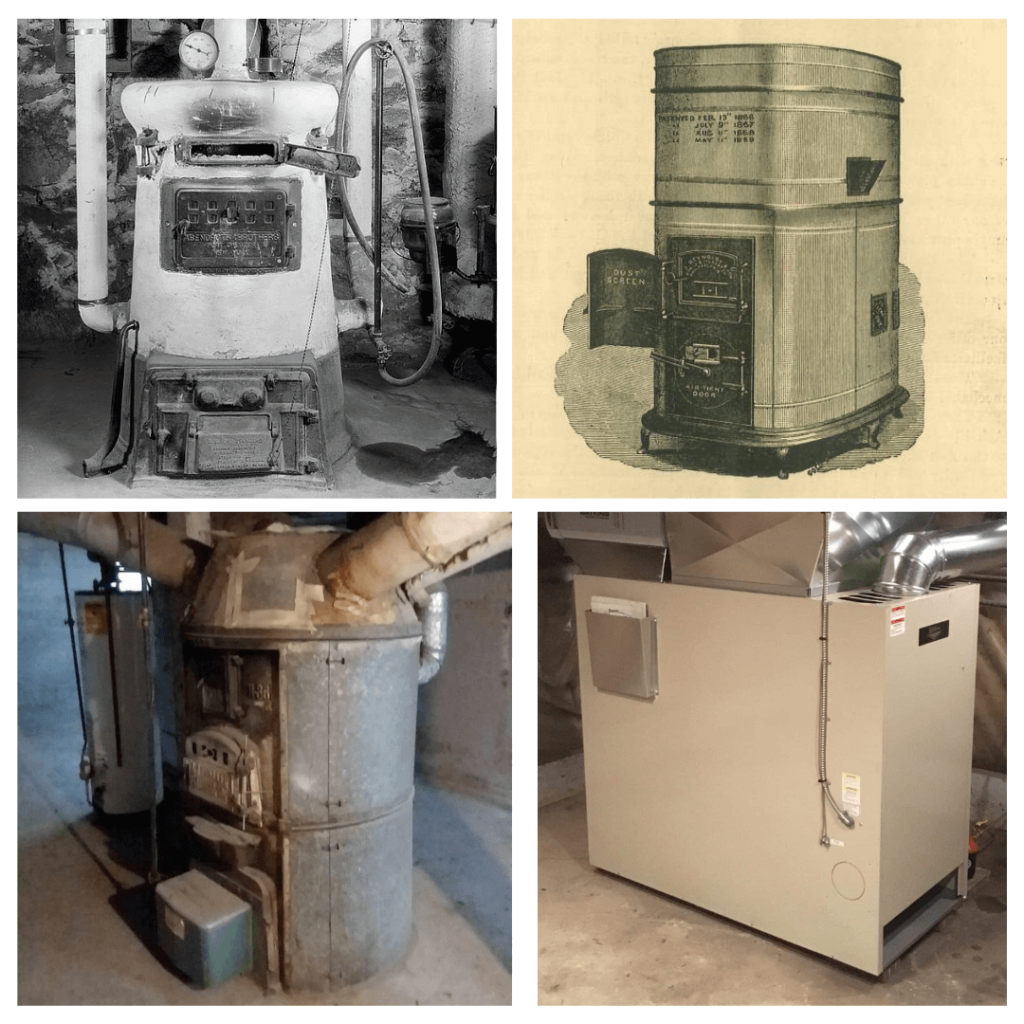
Important Points When Buying a Furnace Installation
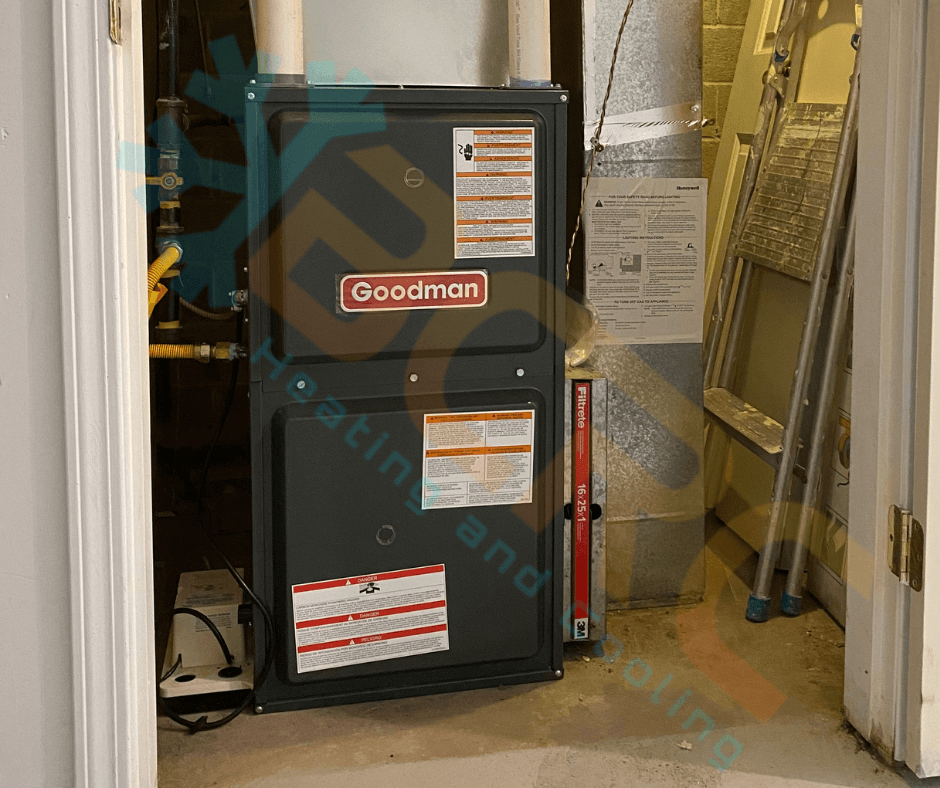
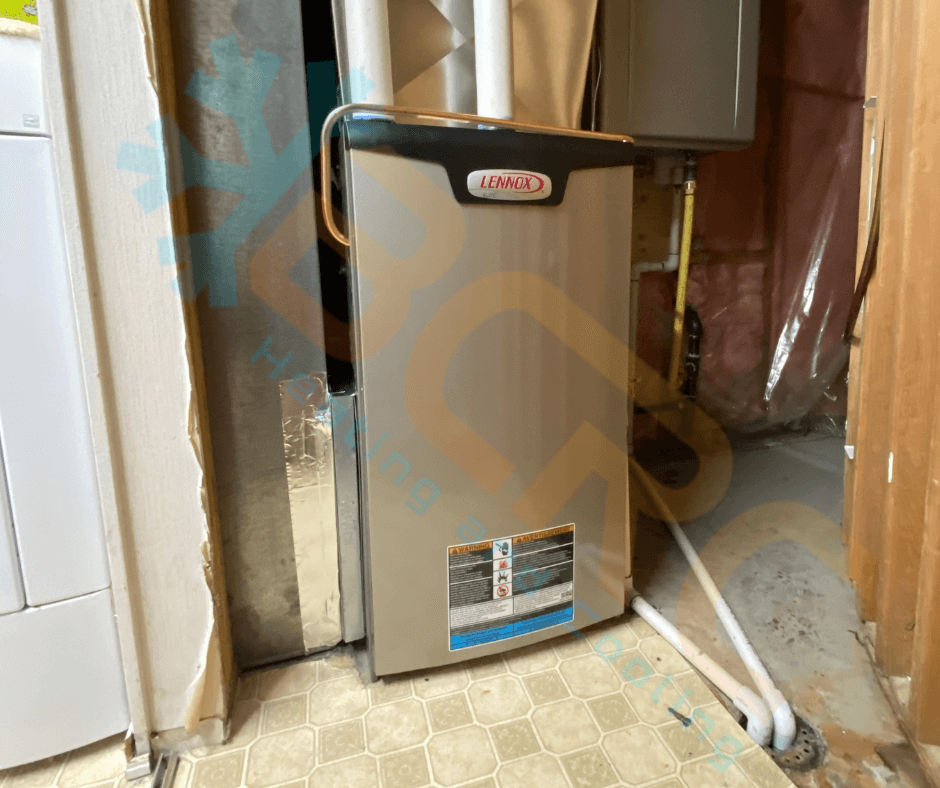
Proper furnace maintenance is essential for ensuring reliable and efficient heating, prolonging the lifespan of the equipment, and maintaining indoor air quality. Here are some tips to help you effectively maintain your Furnace Installation:
Regular Inspections: Schedule annual professional inspections by a qualified HVAC technician. They can identify potential issues, clean components, and ensure your Furnace Installation is operating safely and efficiently.
Change Air Filters: Replace or clean your furnace’s air filters regularly, ideally every 1-3 months. Dirty filters can restrict airflow, reduce efficiency, and negatively impact indoor air quality.
Keep Vents Clear: Ensure that all supply and return vents are unobstructed by furniture, rugs, or other objects. Blocked vents can disrupt airflow and affect heating performance.
Monitor Thermostat Settings: Set your thermostat to the desired temperature and avoid frequent adjustments. Consistent settings help maintain efficient operation.
Check Pilot Light or Ignition: If you have a gas Furnace Installation with a pilot light, ensure it’s consistently lit. For electronic ignitions, make sure they are working properly. Contact a professional if you encounter issues.
Clean Blower Compartment: Turn off power to the furnace and carefully remove the blower compartment cover. Use a vacuum or a soft brush to clean dust and debris from the blower assembly.
Lubricate Moving Parts: If your Furnace Installation has oil ports, apply a few drops of non-detergent motor oil to the blower motor and other moving parts that require lubrication.
Inspect Flue and Venting: Check the flue pipe, chimney, and venting system for any blockages, corrosion, or damage. Proper venting is crucial for safety and efficient operation.
Check and Tighten Electrical Connections: Turn off power to the furnace before checking electrical connections. Inspect wires and connections for signs of wear or corrosion, and tighten any loose connections.
Test Safety Controls: Test safety controls, such as the pressure switch and limit switch, to ensure they’re functioning correctly. Follow manufacturer instructions or consult a professional.
Clean and Inspect Heat Exchanger: A professional should inspect the heat exchanger for cracks or signs of damage during annual maintenance visits. A cracked heat exchanger can lead to carbon monoxide leaks.
Monitor Carbon Monoxide Detectors: Install carbon monoxide detectors near your Furnace Installation and sleeping areas. Test them regularly and replace batteries as needed.
Trim Vegetation: Ensure that outdoor vents, exhaust pipes, and intake pipes are clear of vegetation, debris, and snow. Proper ventilation is essential for safe and efficient operation.
Keep Area Clean: Keep the area around the furnace clean and clutter-free. This helps prevent dust and debris from entering the system.
Schedule Professional Maintenance: Don’t skip annual professional maintenance visits. HVAC technicians have the expertise to identify and address issues that you might miss.
Remember that while some maintenance tasks can be done by homeowners, others require the skills and knowledge of trained HVAC professionals. Regular maintenance not only ensures your Furnace Installation optimal performance but also contributes to your safety and comfort.
Water Heater
Introducing our state-of-the-art Water Heater Installation Services, your gateway to endless comfort and convenience. Embrace the luxury of hot water on demand, catering to your family’s needs with ease. With its cutting-edge technology and energy-efficient design, BCRC’s Water Heater promises to offer quality equipment without compromising performance. Upgrade your home with our sleek and compact Water Heaters, redefining your bathing experience and elevating your lifestyle.
Heating Services
Experience the pinnacle of warmth and comfort with BCRC expert Heating Services. Our highly skilled technicians are dedicated to delivering efficient and reliable solutions to keep your home cozy all year round. From installations to repairs, we cater to your heating serivces needs with unparalleled professionalism and expertise. Trust BCRC’s heating team to provide the perfect heating solution that will transform your living space into a haven of comfort and well-being.
Cooling Services
Stay cool and comfortable even during the hottest days with our exceptional BCRC Cooling Services. Our team of experienced technicians is committed to providing top-notch solutions for all your cooling needs. From air conditioner installations to maintenance and repairs, BCRC delivers reliable and efficient services that guarantee a refreshing indoor environment. Experience the ultimate cooling experience with our trusted and customer-focused Cooling Services.
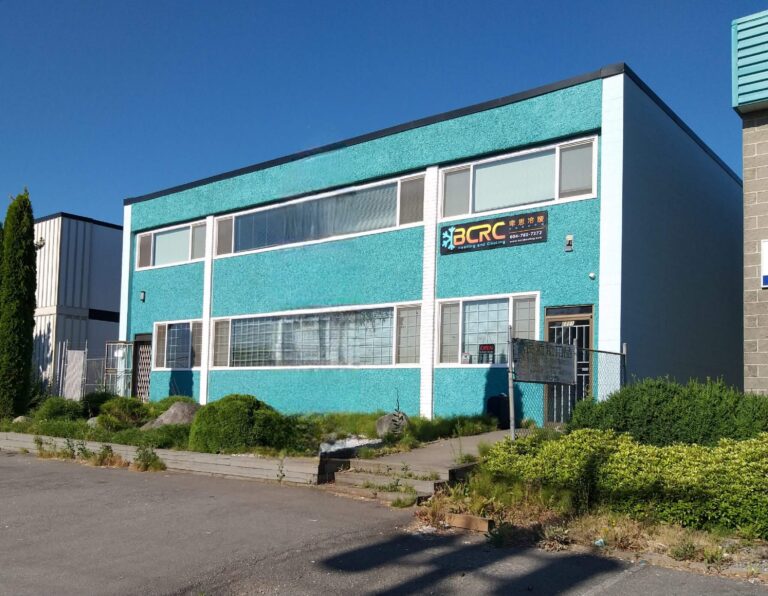
BCRC Work Steps
Approval and Scheduling
Upon receiving the customer's approval, BCRC team schedules a convenient date and time for the Water Heater or HVAC services to be performed. Milestone: The customer confirms their acceptance of the quote and service date, signifying the project's commencement.
Professional Recommendations and Detailed Quote
Based on the assessment, BCRC team provides the customer with professional recommendations and suitable Water Heater or HVAC solutions. Milestone: Within 72 hours of the assessment, a detailed and itemized quote is presented to the customer, outlining all required services and costs.
Site Visit and Assessment
If required, BCRC HVAC technician conducts a site visit to assess the customer's premises in person. Milestone: The site visit is completed, and a comprehensive assessment report is generated within 48 hours.
Initial Inquiry and Consultation
The customer reaches out to BCRC company via phone, email, or an online contact form. Milestone: Within 24 hours, a friendly customer service representative responds to the customer's inquiry and schedules a consultation.
Customer Feedback and Reviews
Customers are encouraged to provide feedback and reviews about their experience with BCRC company. Milestone: Positive customer reviews and testimonials are collected and showcased on BCRC website and marketing materials.
Ongoing Support and Maintenance
BCRC company offers ongoing support, such as maintenance plans, to help customers maintain the efficiency of their Water Heater or HVAC systems. Milestone: The customer signs up for a maintenance plan, establishing a long-term partnership with BCRC company for HVAC system care.
Customer Satisfaction and Follow-Up
BCRC team ensures open communication during and after the service process, addressing any customer concerns promptly. Milestone: A follow-up call or email is made to the customer within 48 hours after completion of the services, ensuring their satisfaction.
Service Execution and Quality Assurance
On the scheduled date, BCRC skilled HVAC technicians arrive at the customer's location to carry out the services. Milestone: The HVAC services are successfully completed, adhering to high-quality standards, and meeting the customer's requirements.
604 781 7272
BCRC Suppliers
At BCRC Heating and Cooling, we pride ourselves on partnering with the most reliable and reputable suppliers in the HVAC Services and Water Heater industry. With a shared commitment to quality, innovation, and customer satisfaction, our suppliers play a crucial role in delivering top-notch products and services to our valued customers.
From heating systems to cooling solutions and ventilation equipment, BCRC Water Heater and HVAC suppliers provide a diverse range of high-performance products to meet every need. With cutting-edge technology and sustainable practices, they ensure our customers receive the best-in-class solutions that maximize efficiency and minimize environmental impact.
Our strong and long-standing partnerships with industry-leading suppliers enable us to stay ahead of the curve and offer the latest advancements in HVAC technology to our clients. We continually assess and vet our suppliers, ensuring they meet the highest standards and align with our dedication to excellence.
With a shared vision of providing exceptional HVAC solutions, our suppliers enable us to exceed customer expectations and deliver unmatched service and support. Choose BCRC Heating and Cooling and experience the power of top-tier HVAC suppliers that drive us towards a brighter, more comfortable, and sustainable future.


